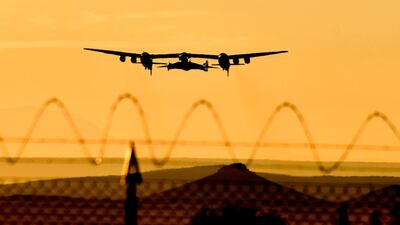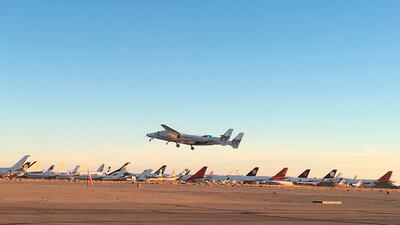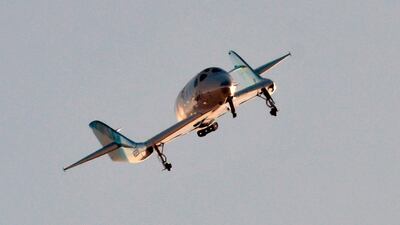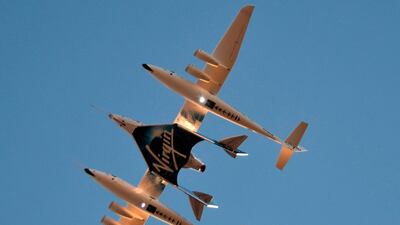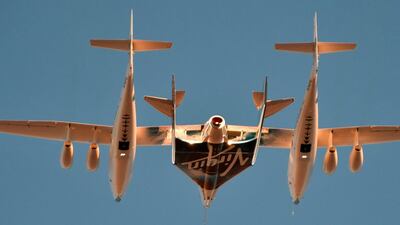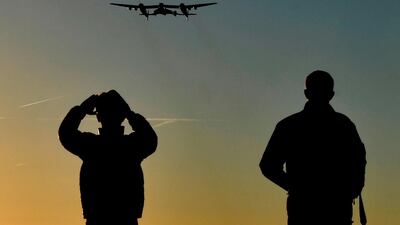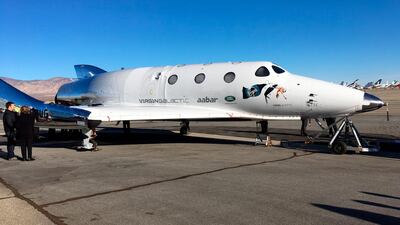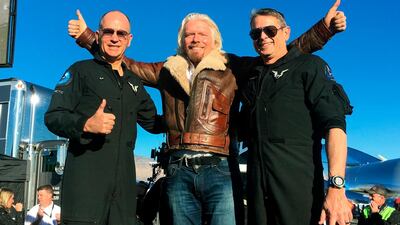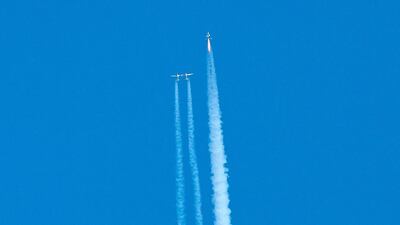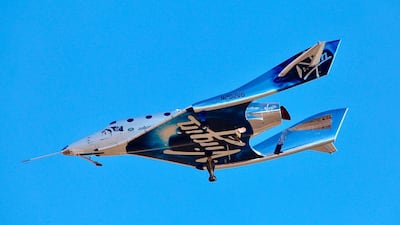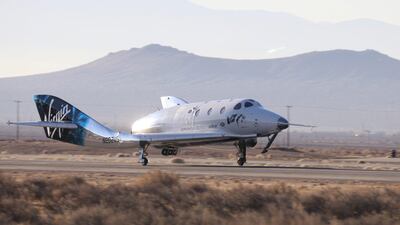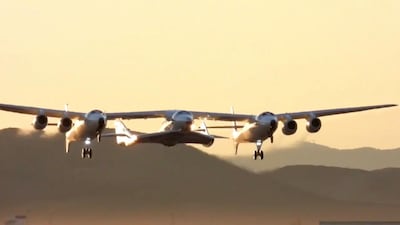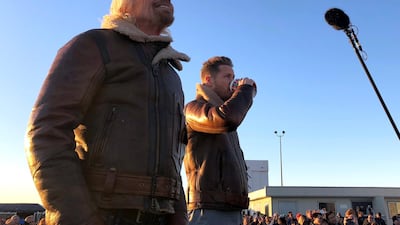Sir Richard Branson’s Virgin Galactic rocket blasted into space on Thursday for the first time, moving a step closer to launching services for paying passengers.
Pilots Mark Stucky and C J Sturckow fired the rocket engine of their Unity spacecraft for 60 seconds, taking them to an altitude of more than 50 miles (80.5 kilometres).
It marked the first manned flight into space from US soli since the end of Nasa’s shuttle missions.
“Ladies and gentlemen, boys and girls, space is Virgin territory,” cried out an emotional Mr Branson, who gathered with hundreds of engineers and employees in the Mojave desert to watch the test as the sun came up.
_______________
Read more:
Amazon's Bezos to charge $200,000 for commercial space flights
Richard Branson working on the return of supersonic air travel
Welcome to the second space race
_______________
He said he hoped to make his first flight some time in 2019 as the company begins its commercial operations.
The test is the latest step in a civilian space race that could see paying passengers making sub-orbital flights as early as next year, as Mr Branson battles Jeff Bezos’s Blue Origin and other pioneers.
An hour earlier, the spacecraft had taken off into the clear morning sky at Mojave Air and Space Port.
Slung beneath White Knight – a twin-fuselaged mother ship - it rumbled down the runway of what used to be a naval air base but is now a civilian test centre, and hub of America’s new breed of start-up space companies.
After climbing steadily for an hour, Unity was released by the carrier plane, dropping for about three seconds before the pilots fired the giant solid-fuel rocket.
Onlookers whooped and cheered as they watched its contrail veer straight upwards as she headed away from Earth.
A Virgin Galactic commentator described the action before declaring the ship had entered space.
“264,000 feet. Welcome to space, Unity,” he said, as Mr Branson and the rest of the crowd erupted.
It kept climbing higher before gravity halted its ascent and it began the glide home.
Speaking afterwards, Mr Sturckow said everything went perfectly.
“We set out to get well above 50 miles and we did,” he said, adding there was more fuel left, allowing for higher flights in future.
He described the wonder of the moment they realised they were on the brink of space.
“To have the motor shut down and say we’re going to space, see the dark skies… everything went great,” he said.
For Mr Branson, it was the culmination of 14 years of preparation, planning, tears and tragedy.
“How on earth do I describe the feeling?” he asked. “Joy definitely. Relief emphatically. Exhilaration absolutely but because I have a tendency to keep pushing forward eager and impatient for everything yet to come, today for the first time in history a crewed spaceship built to carry private passengers reached space."
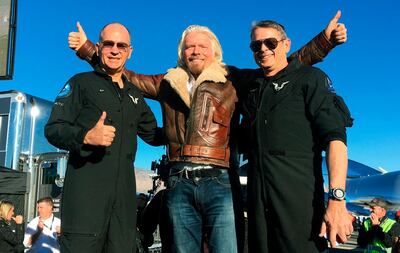
Mr Branson thanked his team of engineers, pilots and staff as well as Abu Dhai’s Aabar Investment for its contribution of $280m in 2009.
“They came in very early on, have been very patient and been very good partners,” he said.
“I’m not sure that we would have been here today if it hadn’t been for their support.”
The launch comes four years after Virgin Galactic's SpaceShipTwo crashed during a test flight, killing the co-pilot.
In the hours before launch, Virgin Galactic’s technicians fussed over the Unity inside her vast hangar, tightening insulating panels and topping up the tanks of compressed oxygen that are used for in-flight navigation. She was already slung beneath White Knight, the four-engine aircraft that carried her aloft.
Close up, Unity is a simple beast. One giant engine fused into a wing.
"All it needs is a bunch of nitrous oxide and a couple of pilots to fly it," said George Whitesides, the chief executive of Virgin Galactic, as he offered visitors, including The National, a first glimpse of the spacecraft's final preparations.
Reaching beyond the threshold of space represents critical progress towards commercial flights that were promised a decade ago. It catapults Virgin Galactic into pole position among the pioneers racing to take customers into space.
More than 600 people from more than 50 countries have already paid $250,000 to book a trip into space aboard the six-passenger rocket craft, about the size of an executive jet.
Some aviation agencies have different definitions of exactly where the earth’s atmosphere ends and space begins but Nasa and the US Air Force award astronaut wings at an altitude of 50 miles and beyond.
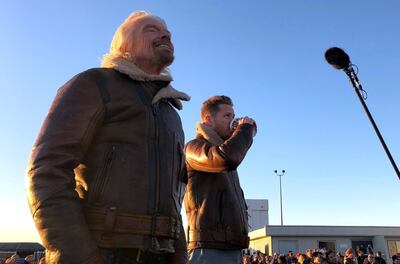
Although the flight went off smoothly, the pilots could have chosen not to fire their engine for the full 50-plus seconds needed to take them that far if the spaceship’s sensors indicated abnormal stresses or if they were unhappy with the conditions.
“This is test flight,” Mr Whitesides stressed to observers before the launch, as Mr Branson brewed tea nearby. “You are going to be watching a no-kidding test flight, with all of the novelty and excitement that goes along with a real test flight.
For the two test pilots the day began at 5.30am, when they strapped themselves into a flight simulator tucked behind curtains in one corner of the vast hangar, with the computer programmed with the latest air speeds and temperatures.
For three seconds after the White Knight releases the Unity from her cradle at an altitude of 43,000 feet, the spaceship falls, allowing the carrier to climb away before the order is given: “Rocket motor ignition.”
Within moments, Unity accelerates to supersonic speeds. After 10 seconds, the pilots throw her into a carving “gamma turn”, hitting an almost vertical climb, accelerating past Mach 2 and beyond Mach 3.
The aircraft keeps climbing even after the pilots cut the solid-fuel rocket at some point after 50 seconds of burn. Then she arrives in space before the earth’s gravity slows her to a stall and pulls her back down.
The descent involves a unique “feathering” configuration in which the twin tails rotate upwards, increasing drag and stabilising the craft before its final glide mode, landing like a conventional aircraft on a runway.
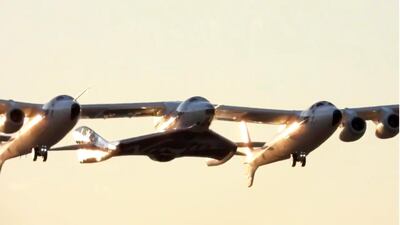
Thursday's flight generated reams of data that technicians will use to push the next test even further and even higher.
“Whether we complete all our objectives during the next flight or need to wait a little longer, we remain committed to completing the final stages of this extraordinary flight test programme as quickly, but more importantly as safely, as possible,” said the company in a statement.
